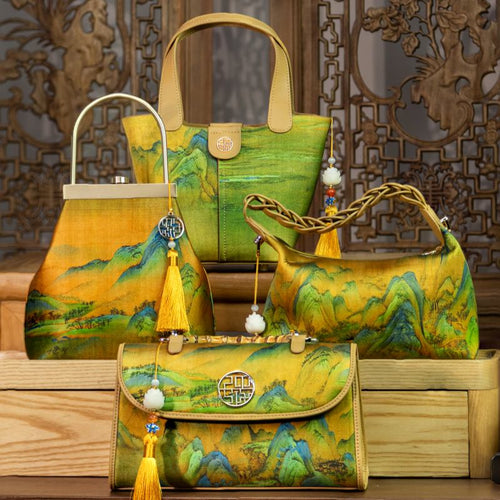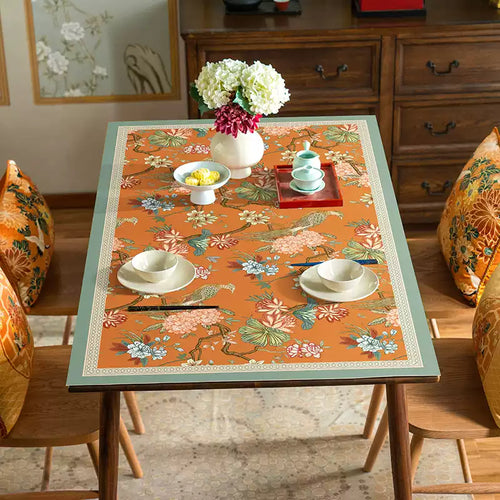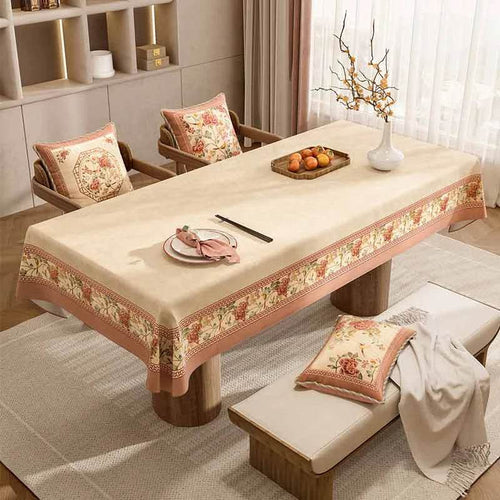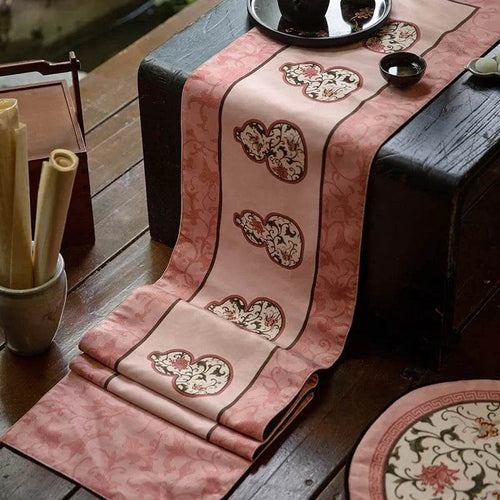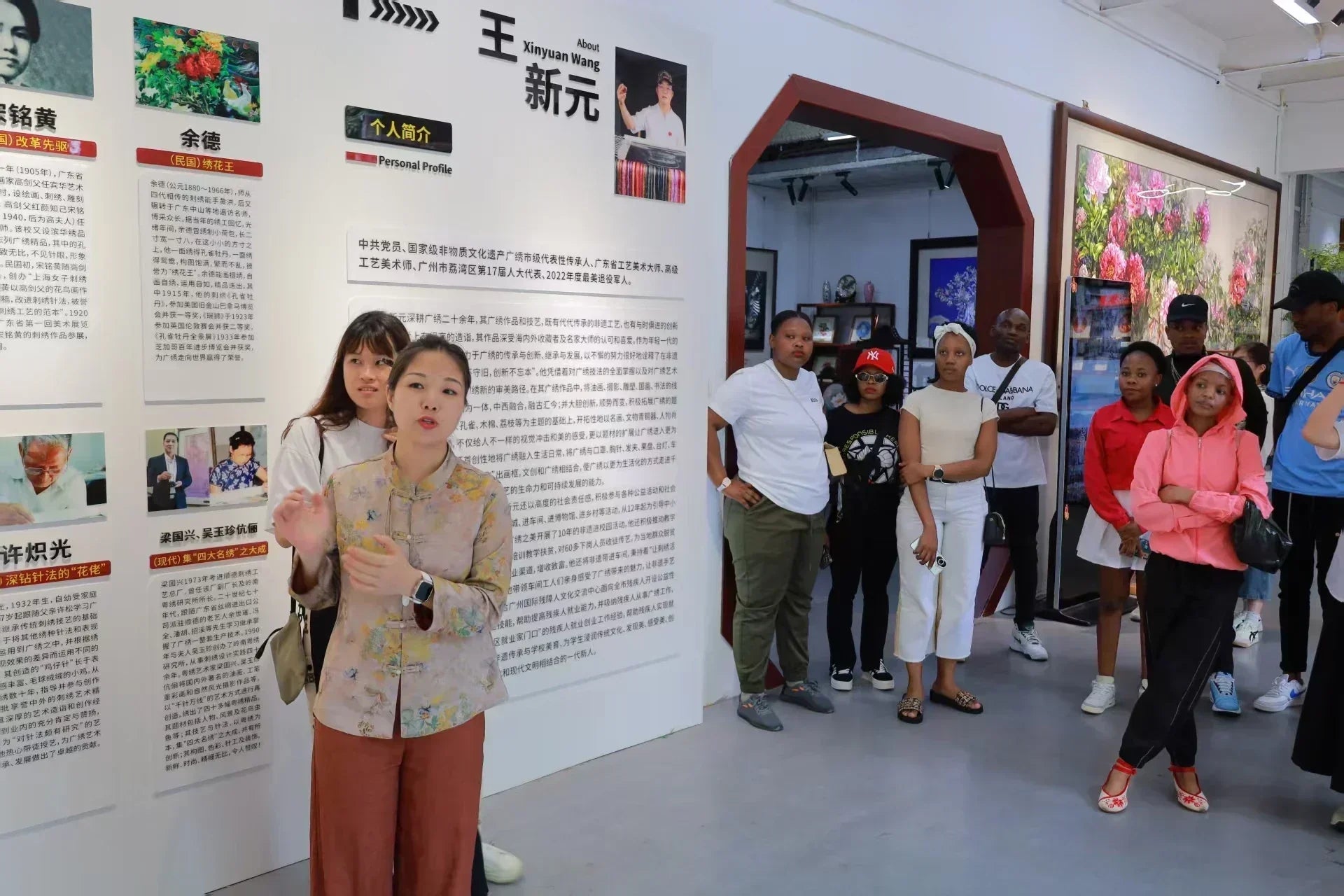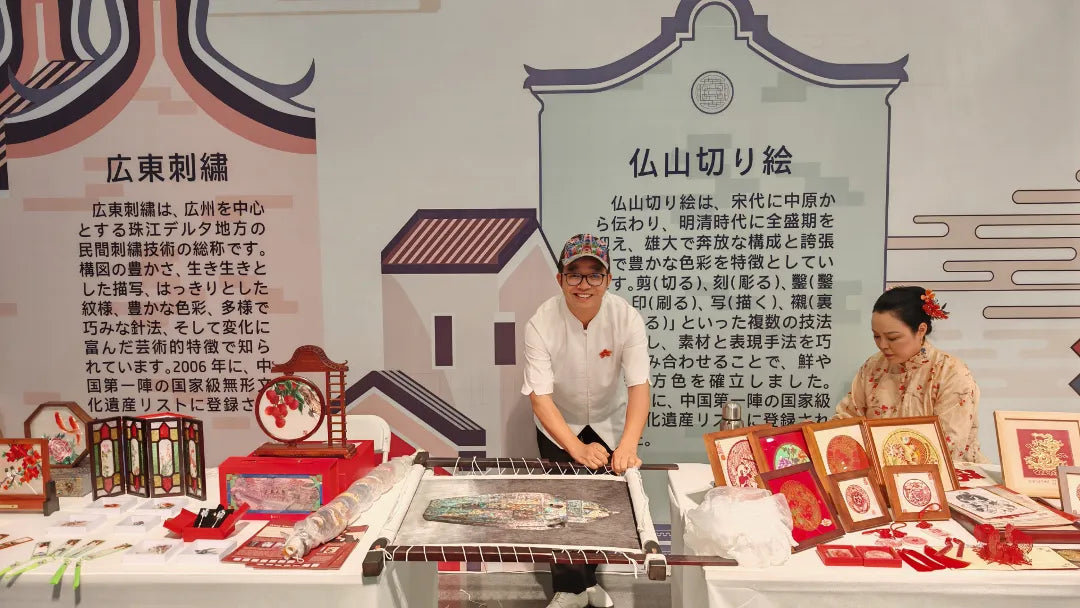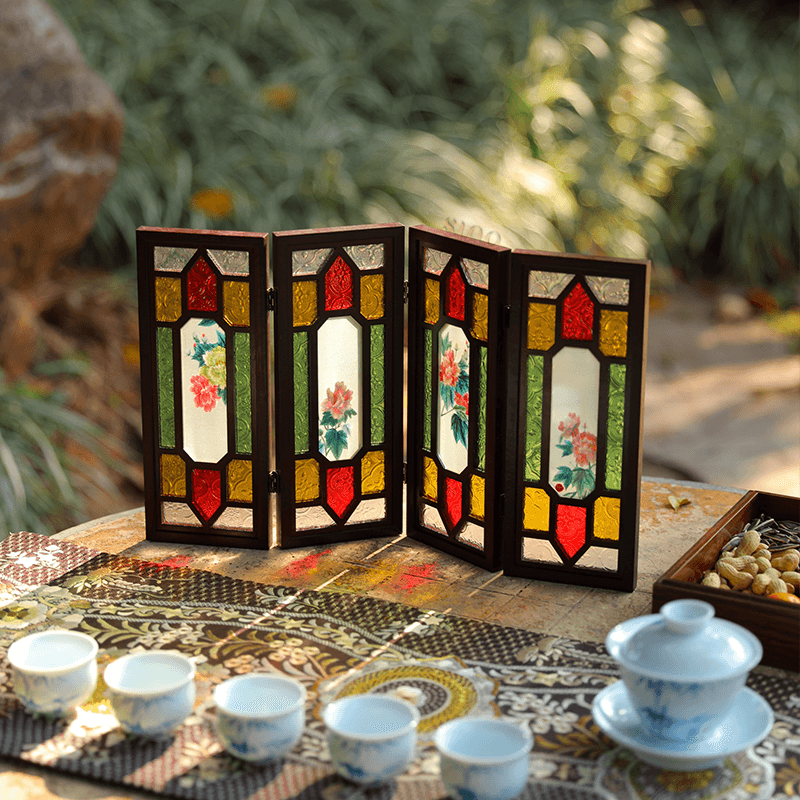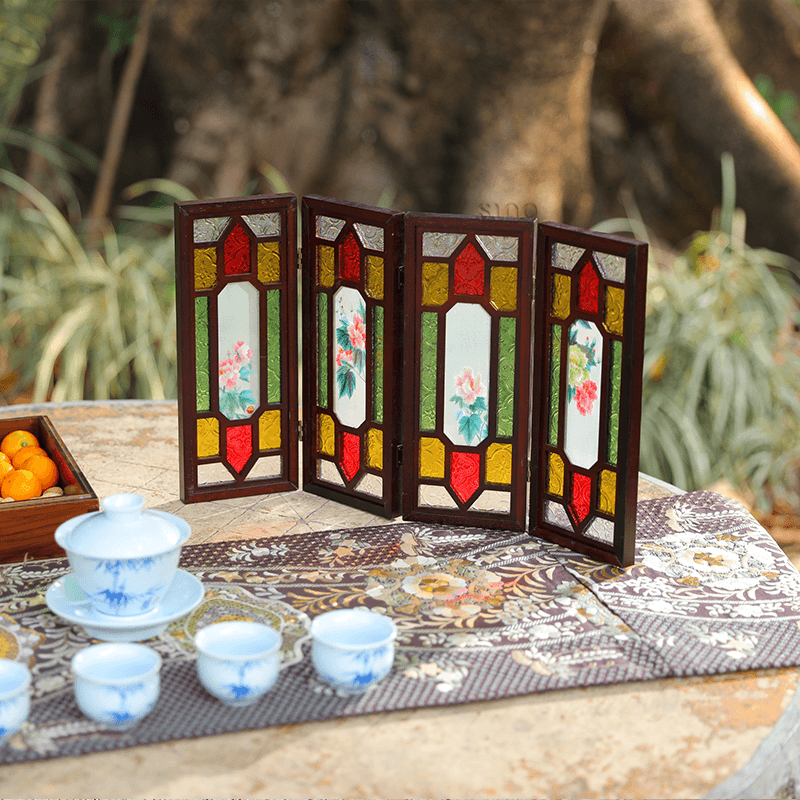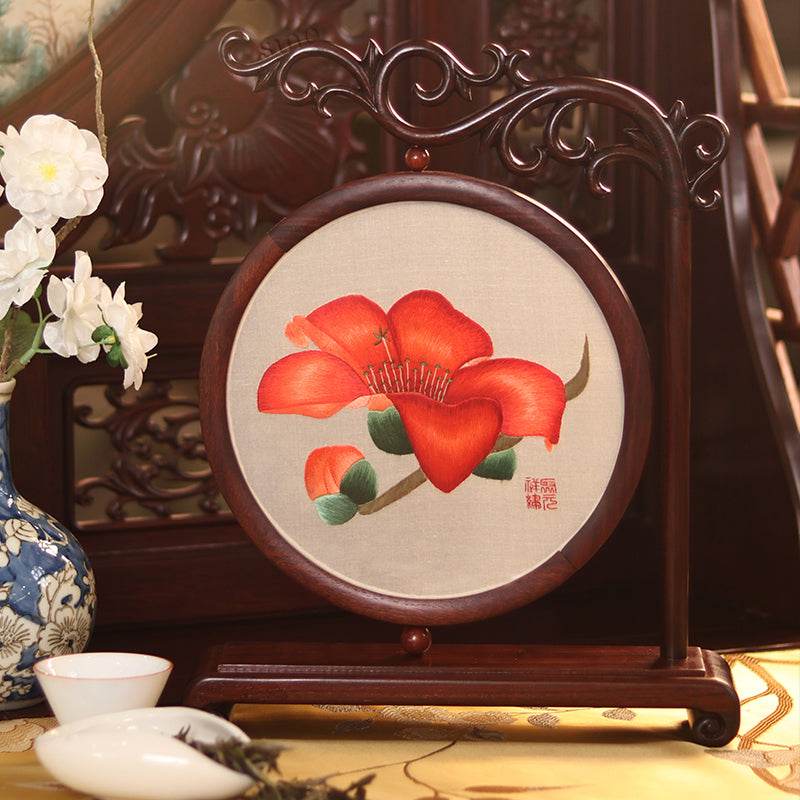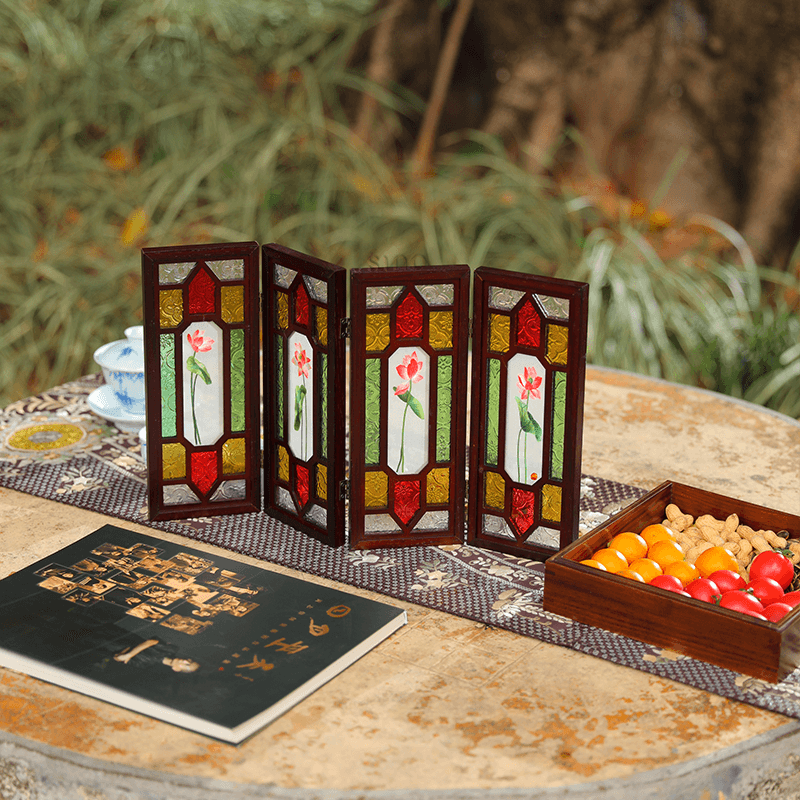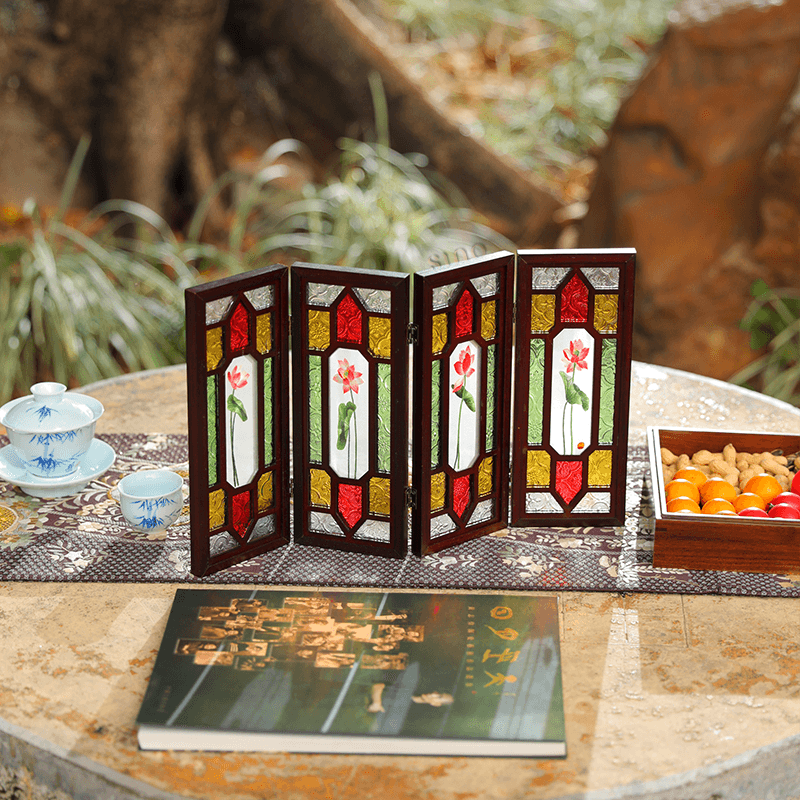In the government activity room of Huishui County, Guizhou, the air hums with quiet focus. Fifty women—mothers, grandmothers, daughters—lean over colorful fabric, their needles darting like dragonflies across the cloth. Just weeks ago, many had never touched an embroidery hoop. Now, under the guidance of Master Wang Xinyuan, a national inheritor of Cantonese embroidery (Guangxiu), they are stitching their way toward a new future.

“There are so many women left behind in our village,” says Long Xiaorui, her needle moving steadily through the cloth. “I want to bring them together, to give them purpose. With every stitch, we can weave the spirit of Haohuahong Town into our work—its colors, its stories, its traditions. My hope is that these embroidered pieces won’t just stay hidden in the mountains, but will carry our culture into the wider world.”

This is the first Guizhou–Guangdong cooperative training program for local embroiderers, aimed at teaching the traditional art of Cantonese embroidery to women in need. For Master Wang, it’s more than passing on a heritage craft—it’s about helping these women improve their quality of life while building a bridge between two rich cultural traditions.

From Novices to Artisans: The 20-Day Transformation
The training classroom, which opened on July 28, 2025, started with the basics: threading needles, practicing foundational stitches, and learning the history of Guangxiu—a craft with over a thousand years of heritage.
During the hands-on training, Master Wang Xinyuan started with the basics—teaching foundational stitches and patiently correcting details in each woman’s work. He showed how different techniques bring out texture and depth in patterns, then encouraged the trainees to be bold with creativity. By blending the refined artistry of Cantonese Embroidery with the unique flair of Guizhou’s local embroidery, he inspired them to create pieces that carry both regional character and a modern spirit—giving new life to a centuries-old tradition.

By the third week, the progress is stunning. Where once there were tangled threads, now there are peonies blooming under fingertips, butterflies emerging from silk.

"Three months, and we can take orders!" one绣娘 (xiùniáng, embroiderer) declares, grinning. The room erupts in laughter, but the confidence is real.

Beyond Needles: Economic Hope and Cultural Revival
This training classroom isn’t just about art—it’s about sustainable income. Many trainees are left-behind women (留守妇女), whose husbands and children have migrated for work. Now, they see a way to earn without leaving home.
Master Wang Xinyuan hopes that the women taking part in this training will stay committed to their craft and gradually turn embroidery into a sustainable livelihood. His vision is simple yet powerful: enabling women to work from home, earn an income, and support their families without leaving their villages. For many “left-behind” women in rural communities, this opportunity means dignity, independence, and a path toward a better life. Beyond teaching skills, Master Wang’s lifelong mission is to bring more people into the intangible cultural heritage economy—ensuring that traditional artistry not only survives, but also uplifts those who need it most.

Master Wang envisions deeper collaborations. Guangxiu has already crossed boundaries, merging with batik (蜡染) and plant-dyeing (植物染). Next, he plans to partner with Huishui’s fengxiangran (枫香染, maple-dyeing), a rare Miao textile tradition.
"Non-traditional partnerships keep heritage alive," he explains. "When crafts evolve, they survive."

The Road Ahead: "Don’t Put Down the Needle"
On the final day, the embroidery women display their creations—vivid floral scenes, blooming peonies, and delicate birds—each piece a testament to 20 days of dedication and skill.

But Master Wang reminds them: "This is just the beginning. Don’t 放下 (fàngxià, put down) the needle just because it’s hard."The women nod and gather for a heartfelt photo with Master Wang, cherishing the moment and the journey ahead.
As the training wraps up, the embroiderers carefully pack away their hoops and threads—but not their dreams. Back in their villages, they’ll keep stitching, weaving not just fabric, but brighter futures for themselves and their families.

For Master Wang, this is one thread in a much larger tapestry. "Every stitch carries our culture," he says. "And every embroiderer who masters this craft becomes a living guardian of our heritage."
In Guizhou’s small town, 50 needles are weaving change—one silk thread at a time.


